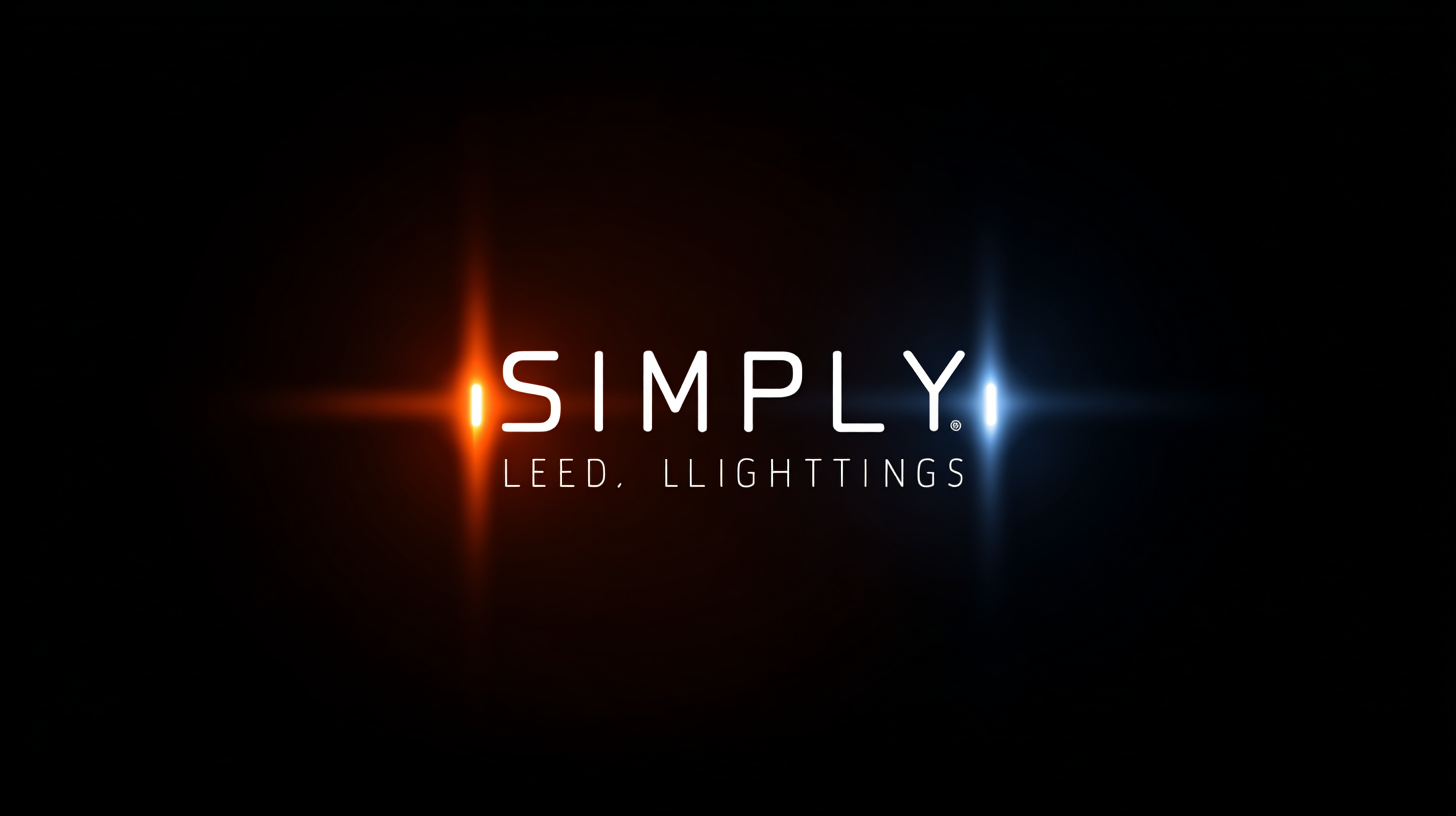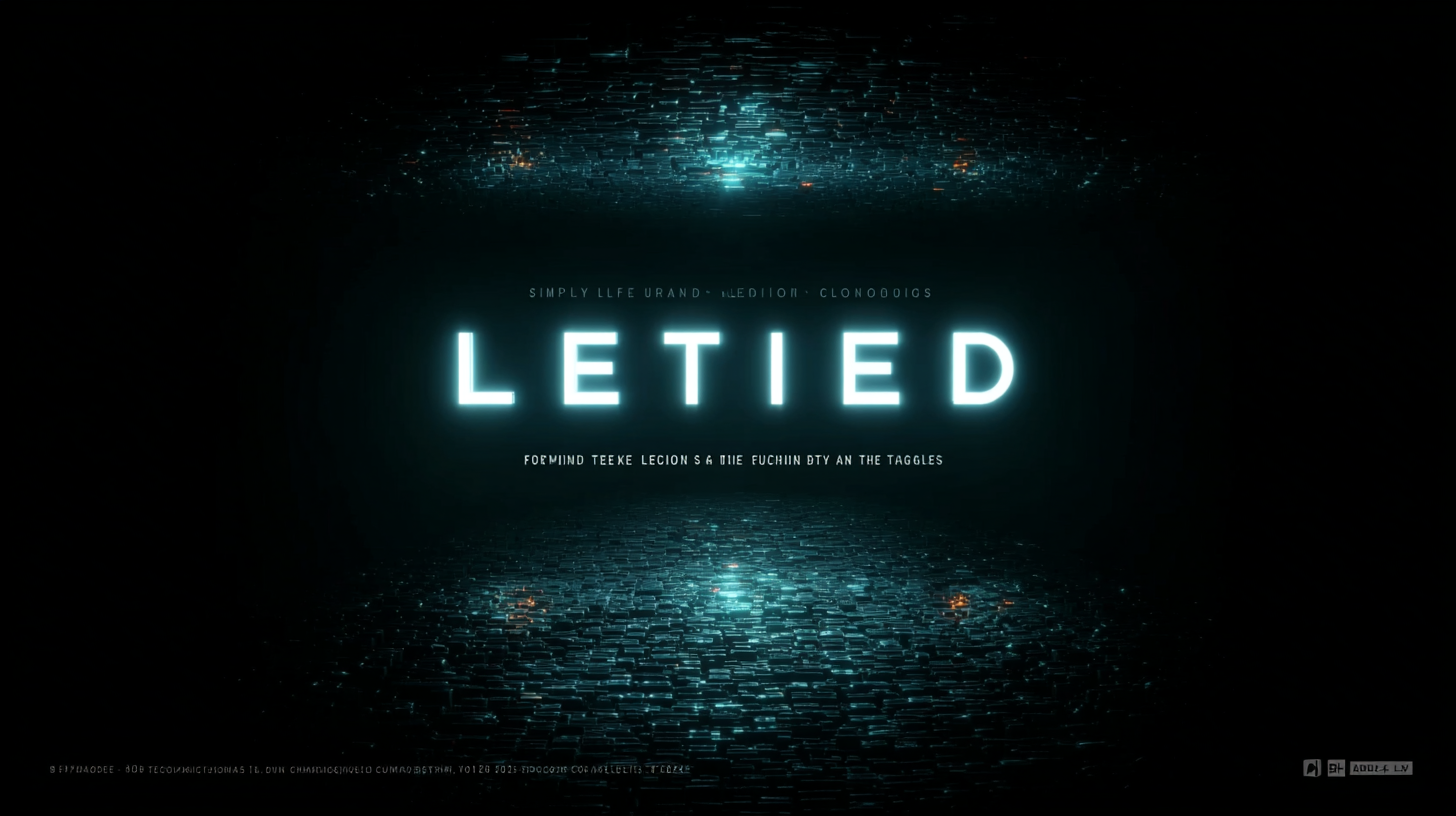Future Innovations in Best Simply Led Lighting How to Lead with Technology in 2025
As we look towards the future of lighting technology in 2025, the evolution of Simply LED Lighting stands out as a key focal point for industry advancements. According to a recent report from the International Energy Agency (IEA), the global LED market is expected to grow at a compound annual growth rate (CAGR) of 18% from 2023 to 2027, driven by increasing energy efficiency and sustainability efforts. This aligns with the findings from MarketsandMarkets, which projects that the smart lighting market will reach $29.1 billion by 2026, further emphasizing the pivotal role of innovative technologies in enhancing user experience and reducing environmental impact. As the industry anticipates these shifts, our blog will explore the latest trends in Simply LED Lighting, offering a comprehensive checklist to help businesses lead with technology and adapt to the rapidly changing landscape.

The Future of LED Lighting: Trends Shaping the Industry by 2025
The LED lighting industry is poised for a transformative shift by 2025, driven by advancements in technology and changing consumer demands. According to a report by Allied Market Research, the global LED lighting market is expected to generate revenues exceeding $130 billion by 2025, growing at a compound annual growth rate (CAGR) of 13.1%. This rapid growth is largely attributed to the increasing adoption of energy-efficient lighting solutions in residential, commercial, and industrial sectors.
One of the leading trends shaping the LED lighting industry is the integration of smart technology. As reported by MarketsandMarkets, the smart lighting market, a sub-segment of LED lighting, is projected to reach $30 billion by 2025. This demonstrates a shift towards more automated and user-friendly lighting systems, enabling enhanced control through mobile applications and smart home devices. Furthermore, the demand for sustainable and eco-friendly solutions is propelling innovations in LED technology, including the development of organic LEDs (OLEDs) and human-centric lighting systems that adapt to users' needs and environments.

Key Product Types in LED Lighting: Features and Applications Explained
The LED lighting industry is experiencing rapid innovations, positioning itself as a cornerstone of modern technology in 2025. Key product types within this realm, such as smart bulbs, linear lighting, and high-bay fixtures, are defining the future of illumination. Smart bulbs, integrated with IoT capabilities, allow users to control their lighting remotely, adjust brightness, and even change colors to suit various moods or times of day. This level of customization is becoming increasingly sought after, as consumers look for adaptable solutions that enhance their living and working environments.
Linear lighting systems are another significant innovation, offering sleek designs that serve both functional and aesthetic purposes. These fixtures are ideal for commercial spaces, providing efficient and even illumination while minimizing energy consumption. Moreover, linear lights are versatile, suitable for applications ranging from offices to retail environments. High-bay LED fixtures represent a critical advancement for industrial settings, delivering powerful and energy-efficient lighting for warehouses and large spaces. Their longevity and durability make them a cost-effective lighting solution that meets the demanding needs of modern infrastructures. As technology continues to advance, understanding these key product types will be essential for harnessing the full potential of LED lighting in the future.
Future Innovations in LED Lighting - Key Product Types in 2025
Sustainable Innovations in LED Technology: Energy Efficiency and Beyond
As we stride into 2025, the landscape of LED technology is undergoing a remarkable metamorphosis driven by sustainability. Innovations in LED lighting not only focus on energy efficiency but also encompass a broader vision of ecological responsibility. Manufacturers are increasingly adopting materials and processes that minimize environmental impact, such as reducing toxic substances and utilizing recyclable components. This shift ensures that the future of lighting is not only about illumination but also about preserving the planet for future generations.
Moreover, the integration of smart technology with LED systems heralds a new era of energy management. Through the use of IoT (Internet of Things), consumers can optimize their energy consumption in real time, adjusting settings based on occupancy and natural light availability. This seamless connectivity not only enhances user experience but also significantly reduces energy wastage. As we embrace these sustainable innovations, the transition to LED lighting will be more than just a trend; it will be a fundamental change towards a greener, more energy-conscious world.

Integrating Smart Technology: How IoT is Transforming LED Lighting Solutions
The landscape of LED lighting solutions is experiencing a transformative shift with the integration of Internet of Things (IoT) technology. As we approach 2025, smart LED systems are becoming increasingly interconnected, allowing for seamless communication and control. This evolution not only enhances energy efficiency but also fosters a more dynamic interaction between users and their environments. By utilizing sensors and connectivity, these smart lighting solutions can adapt in real time to changing conditions, optimizing both functionality and user satisfaction.
Moreover, the implementation of IoT in LED lighting opens up new possibilities for automation and remote management. Users can monitor and control their lighting systems through mobile applications, adjusting brightness and color based on personal preferences or environmental needs. This level of customization not only promotes energy conservation but also enhances the ambiance of any space, whether it be residential, commercial, or urban settings. Innovations like these are setting the stage for a more sustainable and responsive lighting framework, ultimately transforming the way we perceive and interact with our surroundings.
Future Innovations in Best Simply Led Lighting: Integrating Smart Technology
| Feature | Description | Impact on IoT Integration |
|---|---|---|
| Smart Sensors | Devices that detect occupancy and light levels to optimize energy consumption. | Reduces energy waste by adjusting lighting based on real-time data. |
| Automated Control Systems | Centralized systems for managing lighting through mobile apps or voice commands. | Enhances user experience and provides convenient control over home and office environments. |
| Energy Monitoring | Tools that track energy usage and provide insights for efficiency improvements. | Encourages sustainable practices and cost savings through informed decisions. |
| Dynamic Lighting | Systems that adjust color temperature and brightness throughout the day. | Mimics natural light patterns, improving mood and productivity. |
| Integration with Smart Home Systems | Seamless connectivity with platforms like Alexa, Google Home, etc. | Provides a holistic smart home experience, allowing interoperability among devices. |
Market Growth Projections: Understanding Consumer Demand and Industry Potential
As we look toward 2025, the landscape of consumer demand reveals significant growth potential across various industries. The global skincare market, projected to expand from $122.11 billion in 2025 to $194.05 billion in the coming years, highlights a growing awareness and investment in personal care products. This surge is driven by consumers seeking innovative solutions and sustainable options, from natural ingredients to eco-friendly packaging. Brands that prioritize transparency and ethical practices are likely to thrive, capitalizing on the rising demand for products that not only enhance beauty but also align with consumer values.
The technology industry is also set for remarkable growth, with significant increases in IT spending and investments in artificial intelligence shaping the future. The focus on innovation will not only revolutionize existing products but also create new markets and opportunities. As businesses adapt to these trends, understanding consumer behavior becomes crucial. Marketers must harness data analytics to tailor their strategies effectively, ensuring they meet the evolving needs of consumers who are increasingly placing a premium on technology that enhances their lifestyle. This uncharted territory calls for adaptability and foresight, making it essential for industry players to stay ahead of the curve.
